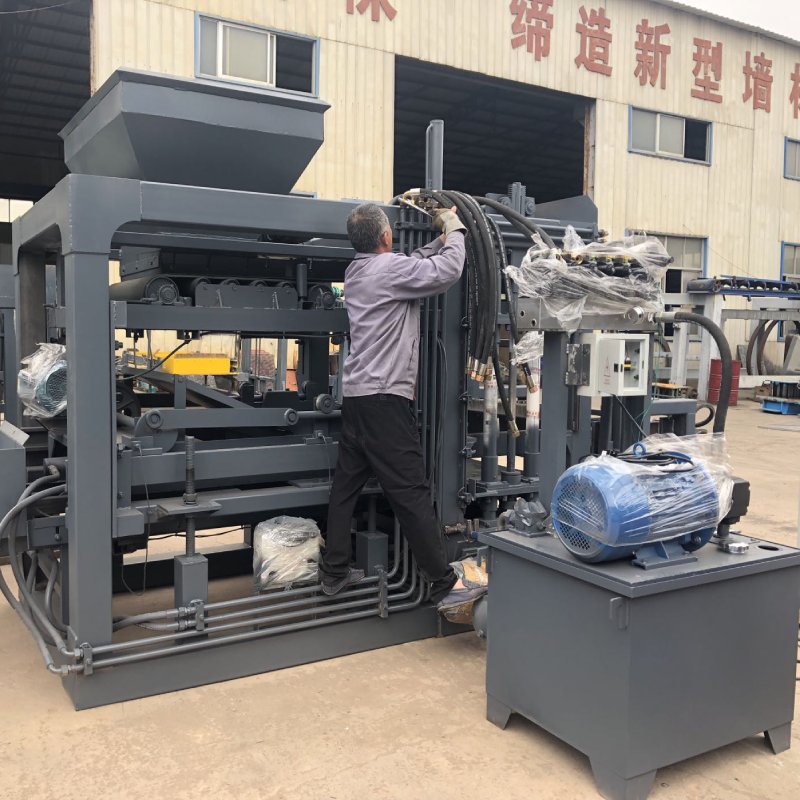
Image source Aiwei Block machine
New Automated Block Brick Making Machines Boost Efficiency and Quality
Introduction
In the realm of construction and infrastructure development, the evolution of technology has consistently driven progress. The construction industry, traditionally known for its labor-intensive processes, has witnessed a remarkable transformation with the introduction of automated block brick making machines. These cutting-edge machines are redefining efficiency and quality standards, revolutionizing the way buildings and structures are constructed. In this article, we delve into the advancements in automated block brick making machines, exploring their benefits, functionality, and their profound impact on the construction landscape.
The Evolution of Block Brick Making Machines
Traditional brick-making methods, often characterized by manual labor, were time-consuming and labor-intensive. The introduction of mechanized brick-making machines marked a significant leap forward, enhancing production rates and consistency. However, recent advancements in technology have elevated these machines to a new level, with automation playing a pivotal role.
The Rise of Automation in Construction
Automation, driven by the integration of robotics, artificial intelligence, and sophisticated control systems, has permeated various industries, and construction is no exception. Automated block brick making machines harness this automation, optimizing every aspect of the production process.
Benefits of Automated Block Brick Making Machines
- Enhanced Efficiency: One of the most prominent benefits of automated block brick making machines is their unparalleled efficiency. These machines can produce a significantly higher number of bricks in a shorter period compared to manual methods or even older mechanized machines. The automation of processes such as raw material handling, mixing, molding, and curing eliminates bottlenecks and minimizes downtime.
- Consistency in Quality: Automation ensures a consistent level of quality in each brick produced. The precision and accuracy of these machines result in uniformly shaped and dimensionally accurate bricks, reducing wastage and enhancing the structural integrity of buildings.
- Reduced Labor Dependency: With automation taking over labor-intensive tasks, the need for manual labor decreases. This not only addresses labor shortages but also allows skilled labor to focus on more intricate aspects of construction, ultimately leading to higher craftsmanship.
- Cost Savings: While the initial investment in automated block brick making machines might be higher, the long-term cost savings are substantial. Lower labor costs, reduced material wastage, and increased production rates contribute to a more cost-effective construction process.
- Safety Improvements: Automation eliminates the need for workers to engage in physically demanding or hazardous tasks, leading to a safer work environment. This results in a decrease in workplace accidents and improved worker well-being.
Functionality of Automated Block Brick Making Machines
- Material Handling and Mixing: Automated machines handle the entire process, from raw material input to mixing. These machines can accurately measure and mix raw materials such as cement, aggregates, and additives, ensuring a consistent blend.
- Molding and Compacting: Precision molding ensures that each brick meets dimensional specifications. Automated systems apply the right amount of pressure to compact the mixture, ensuring uniform density and strength.
- Curing and Quality Control: Automated machines control the curing process, which is critical for achieving the desired strength and durability. These machines monitor temperature, humidity, and curing time to ensure optimal conditions for brick development.
- Data Analytics and Monitoring: Many modern automated machines are equipped with sensors and data analytics capabilities. This enables real-time monitoring of various parameters, facilitating predictive maintenance and immediate issue resolution.
Impact on Construction Industry
The adoption of automated block brick making machines has a far-reaching impact on the construction industry:
- Faster Project Completion: Automated machines accelerate the production of bricks, contributing to faster project completion timelines. This is especially beneficial for large-scale projects where time constraints are significant.
- Architectural Freedom: The consistent quality of bricks allows architects and designers to explore more intricate and creative designs. The uniformity in dimensions facilitates precise brick placement, resulting in aesthetically pleasing structures.
- Sustainable Construction: Automation leads to reduced material wastage, energy consumption, and emissions. This aligns with sustainable construction practices, which are increasingly important in today’s environmentally conscious world.
- Skills Enhancement: As labor-intensive tasks become automated, the construction workforce can focus on upskilling in areas that require human expertise, such as design, engineering, and complex problem-solving.
Challenges and Future Prospects
While automated block brick making machines offer numerous benefits, there are challenges to consider:
- Initial Investment: The high upfront cost of these machines might deter some smaller construction companies from adopting them.
- Technical Expertise: Operating and maintaining automated machines require specialized technical knowledge, which might be a barrier for some construction teams.
- Integration and Compatibility: Integrating automated systems with existing workflows and software can pose compatibility challenges.
Despite these challenges, the future of automated block brick making machines is promising. As technology continues to advance, costs are likely to decrease, making these machines more accessible to a wider range of construction companies.
Conclusion
Automated block brick making machines have ushered in a new era of efficiency and quality in the construction industry. With the power of automation, these machines are capable of producing bricks at an unprecedented rate while maintaining consistent quality standards. The impact of these machines goes beyond improved productivity; it extends to safety, sustainability, and the elevation of construction craftsmanship. As the construction industry embraces automation, the built environment is set to undergo a transformative shift that promises to shape the way we build and construct for years to come.
